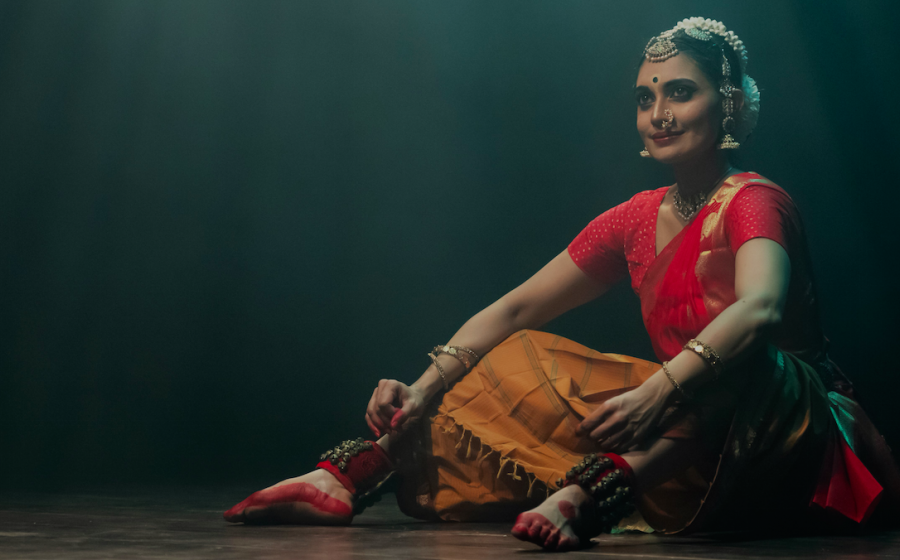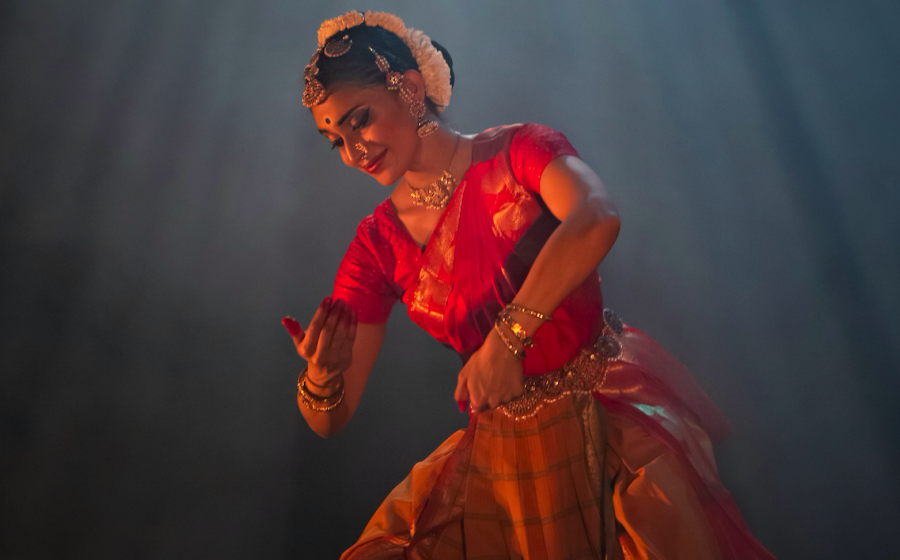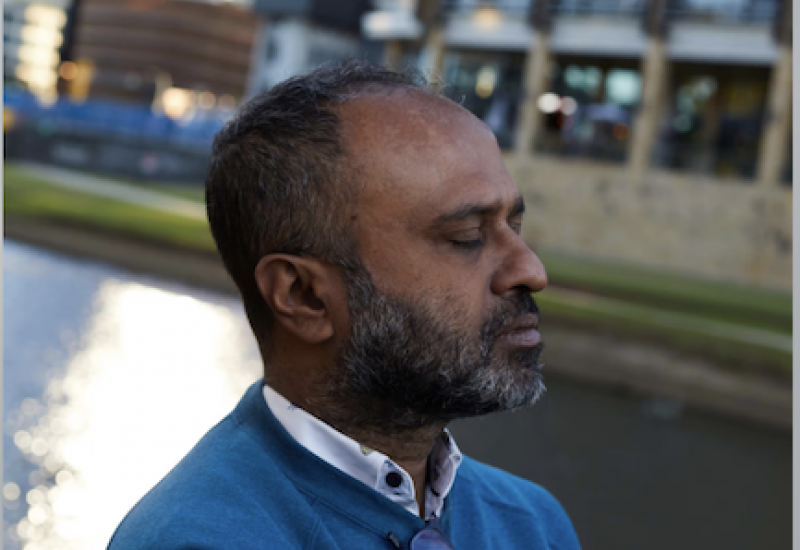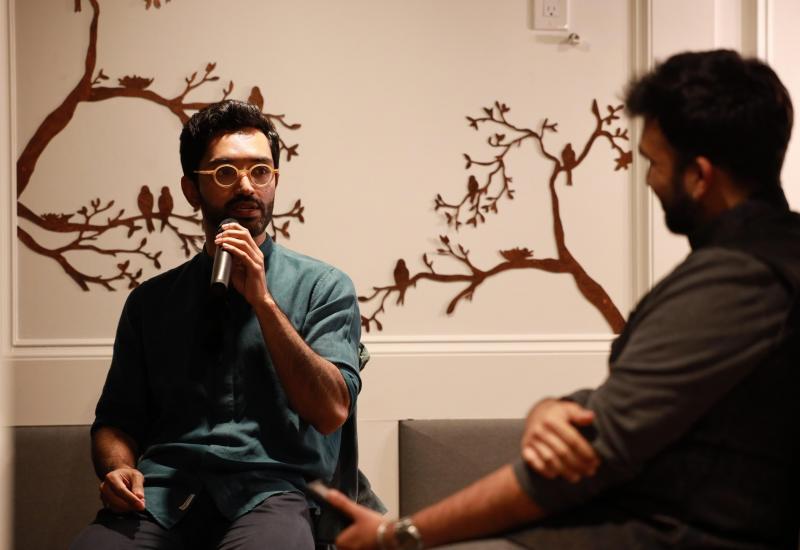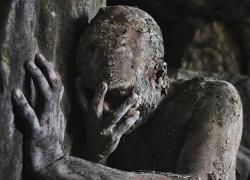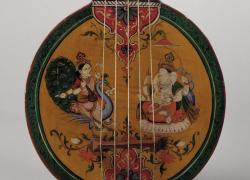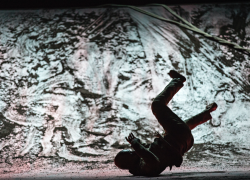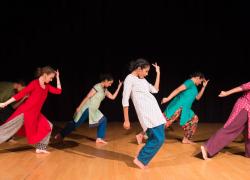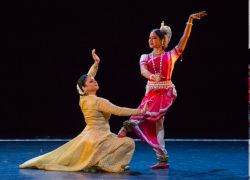Vitthala, My Mother-Divya Ravi
Divya Ravi is a prominent Bharatanatyam soloist from Bangalore who has been resident in the UK for three years. She is currently mentored by Mavin Khoo and gave a solo concert at The Bhavan, London in March 2022, presenting his choreographies. Divya is passionate in her aim to ‘create and sustain a lucid dialogue between Indic ideas and a modern audience’. It is fitting then that Divya will be exploring the theme of the feminine aspects of a male deity Vitthal of Pandharpur in VitthāMāi – Vitthala, My Mother due to premiere online on 9 January.
Divya Ravi gives an in-depth context to the performance to Pulse which can only enhance the reader’s enjoyment when they see the piece.
1. Could you tell us about the festival which has commissioned your work?
‘VitthāMāi – Vitthala, My Mother’ has been commissioned by Spirit of Margazhi Utsav (a digital performance series born during the pandemic). This series aimed to foster continued engagement with the arts in the context of the vibrant, reflective and creative month of Margazhi (falling between mid-December to mid-January). While live arts have resumed with full gusto, Spirit of Margazhi Utsav continues as a digital series for 30 days, expanding the boundaries of digital art, including music, dance, theatre traditions and visual arts.
2 Your piece explores the feminine aspect of the deity Vitthal. Could you tell us why this deity is important to you? Where is the Varkary situated within the Hindu belief system?
In the last few years, I have taken a keen interest in the Bhakti-movement that emerged pan-India between the 6th and 16th centuries. On one hand, the Bhakti movement resisted power politics, caste-based hegemony, and patriarchy prevalent in the context of religion. On the other hand, it emerged as a means to reaffirm indic philosophy, amidst rampant invasions. The Bhakti movement advocated accessible spirituality at the grassroots; through a personal godhead as opposed to lofty ideas of divinity; and through poetry in the local vernacular as opposed to chants unintelligible to the commoner. Subversive and progressive for its times!
The Warkari (/Varkari) tradition is an offshoot of the Bhakti movement in Maharashtra (Central India), with the town of Pandharpur as its epicenter. Although I have no roots or connections with this land, I find the ‘living’ Varkari tradition particularly intriguing for its disarming simplicity enveloped in love. The deity, Vitthala, was not just ‘God’ but a friend/lover/father/sibling/mother, to the devotees who were mostly blue-collared workers. Shunned by society and its norms, the devotees found solace in the deity, the only one who didn’t discriminate against them. Their poetry (Abhanga-s and Ovi-s) vividly describe the specifically male deity as ‘Aai’ and ‘Maai’ (Mother) – probably because it is only the mother who doesn’t discriminate between their children. A male deity as a mother is such a poignant concept, unique to this cult. This fluidity fascinates me and forms the edifice of my exploration in VitthāMāi.
3. What drew you to the subject? For those with no religious beliefs how do you hope to connect with your audience?
VitthāMāi is steeped in ideas of love and surrender and explores the relationship between a cosmic mother and his/her platoon of children. There’s something to take back from it for most people – God for the religious, artistry (musical, choreographic, poetic, visual) for the aesthete, maternal love for the humanist, channelled resistance for the rebel and the grey-zone for those who thrive in ambiguity!
4. Also tell us what is distinctive about the music composition of the abhanga?
In a discussion with Priya Murali, the curator of Spirit of Margazhi Utsav, a lucid composition of Maharanyam Sri Muralidhara Swamiji surfaced - each verse of this Madhurageetam (in Tamil language) elucidates a Varkari saint. The magnitude and depth of content urged me to choose this piece for the commission. With a few more readings, every Tamil verse unveiled itself as a summary of an Abhanga (in Marathi language) by the corresponding saint poet who it referenced. One by one, ideas started accumulating, and before we knew it, Sharan (my musician husband) and I had a script that for the first time incorporated historic literature Marathi Abhanga-s into a contemporary Tamil Madhurageetam.
Abhanga-s true to the intent of their roots are sing-along melodies – electric, breezy and boisterous. They are rendered in a distinct style that is neither from South India not from North India. A groovy beat, usually in an 8-beat cycle, underpins the lyric. Musically it proved to be a massive challenge to integrate Abhanga-s seamlessly into a more grounded Karnatic-based Madhurageetam, but nothing is impossible for my musicians – Sharan Subramanian (Vocals), Mahesha Swamy (flute), Srihari Rangaswamy (percussions) and Suma Rani (Sitar) who achieved this effortlessly.
5. What did you learn in the process of creation?
This project reinforced the importance of keeping our eyes and ears always peeled – for we never know how, when and where inspiration strikes. Sometimes we subconsciously absorb material that would only make sense years later, and eventually find its way into our work. The Abhanga-s Sharan and I have listened to on road-trips over the years, a painting we saw on the walls of the Pandharpur Vitthala Temple in 2019, a discourse I attended in 2018 – these have been crucial in developing VitthāMāi.
Creating VitthāMāi revealed to me that motherhood is not gender-prescribed. This relevant thought is observed in practice in Pandharpur, where everybody addresses each other as ‘Mai’ or ‘Mauli’ (mother), irrespective of who they are, where they come from or which gender they identify with. Understanding the Varkari tradition taught me that resistance need not be violent – rather, it can be channelized into poetic subversion that becomes a beacon for generations to come!
6. How did you push the form? (if at all that is important to you).
VitthāMāi is a culmination of four art forms – music, dance, lighting and cinematography. I believe we’ve pushed the boundaries of all these four forms because the subject, the literature and its depth organically led us all to places we have never been before!
The incorporation of scissors sounds, eery ghostly echoes and tribal basal tones into the soundscape is something to watch out for. Choreographically this work has challenged me in many ways to think outside the framework, whilst upholding the integrity of the form! Each segment speaks of a different devotee and calls for a very distinct quality of movement – there’s Senanhavi the barber, who wielded the scissors with elan. Then there’s Tukaram who refers to Vitthala as a ghost that grabs hold of passers-by and doesn’t let them leave – channelling a creepy ghost was by far the most challenging choreographic exercise for me, and I drew inspiration from Christopher Bruce’s ‘Ghost Dances’, and South Indian folk traditions of Bhoota Kola (Karnataka) and Theyyam (Kerala). Then comes Chokhamela, an outcaste, whose movements needed to be tribal – raw, unpolished, and visceral. And the electrifying finale sequence with the deity dancing with all the devotees (or should we say, mother dancing with children?) had to be muscular, delicate, and folkish all at once – and still be Bharatanatyam!
Music, movement, lighting design and visual-scape have all worked around each other driven by a common goal – to serve the literature and the conceptual intent of the work. The result that has emerged is therefore fresh and cutting-edge, yet rooted.
8. Please add any and other information from your side that will be helpful to your audience to appreciate your work.
VitthāMāi is the result of the generosity of many artistic and creative minds. I was fortunate to receive musical inputs from the revered Rajkumar Bharati, dance inputs from my mentor Mavin Khoo and subject matter inputs from resource scholar Pradnya Agasthi. The music was created trans-nationally, with Sharan and I recording our bits in England, and the rest of my musicians recording in India. Arjunjith, the cinematographer and Keerthi Kumar, the lighting designer have aesthetic practices that aligned seamlessly with my artistic vision – the final product you see is as much theirs as mine. The dance work will be preceded by an animated prologue with illustrations by Upasana Govindarajan, that contextualizes the piece for the uninitiated.
The creation and rehearsal of this work is supported by Arts Council England, Dance East, London Performance Studios, Akademi and SAMPAD. VitthāMāi – Vitthala, My Mother premieres on Spirit of Margazhi Utsav Youtube Channel on January 9th 2023.

